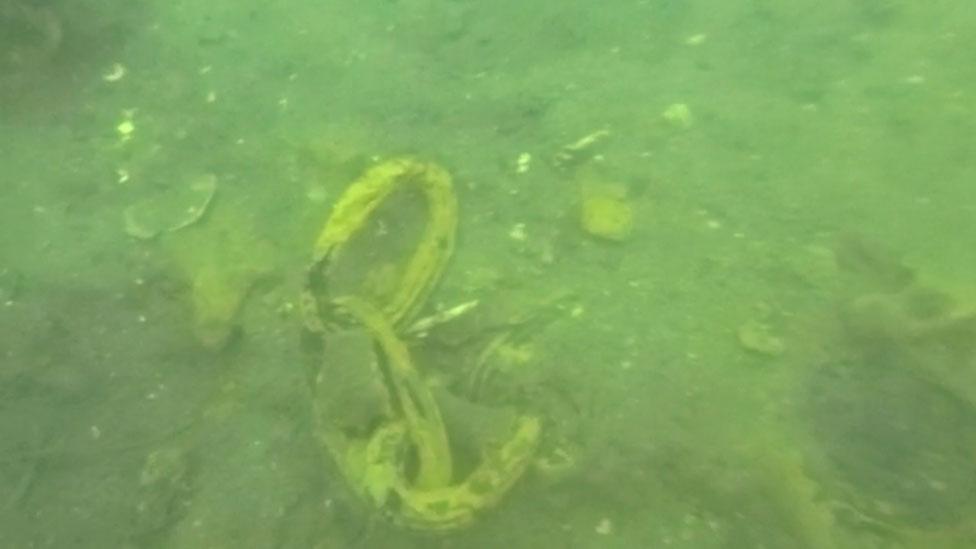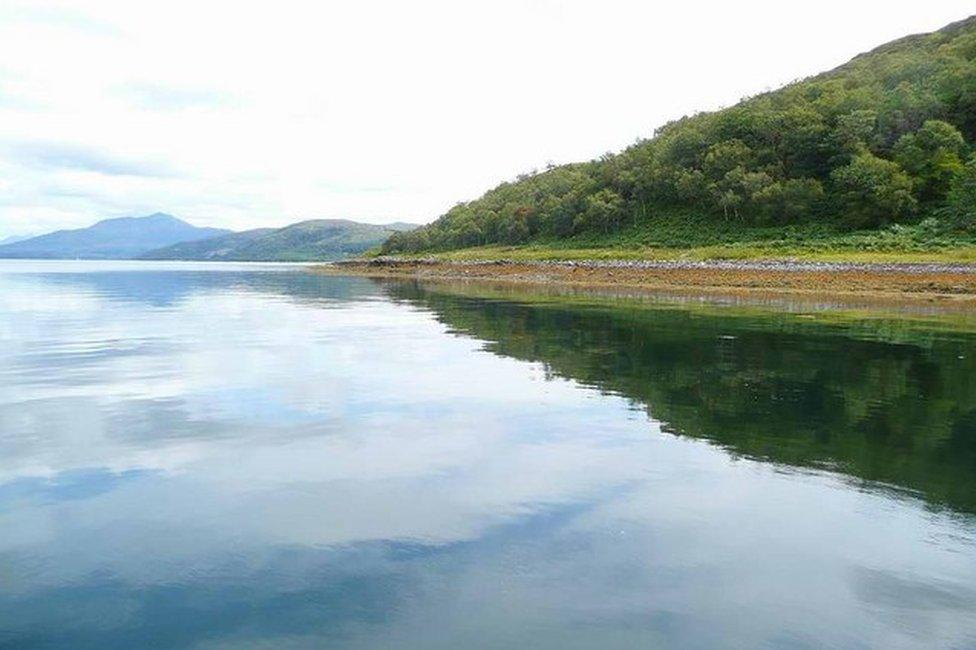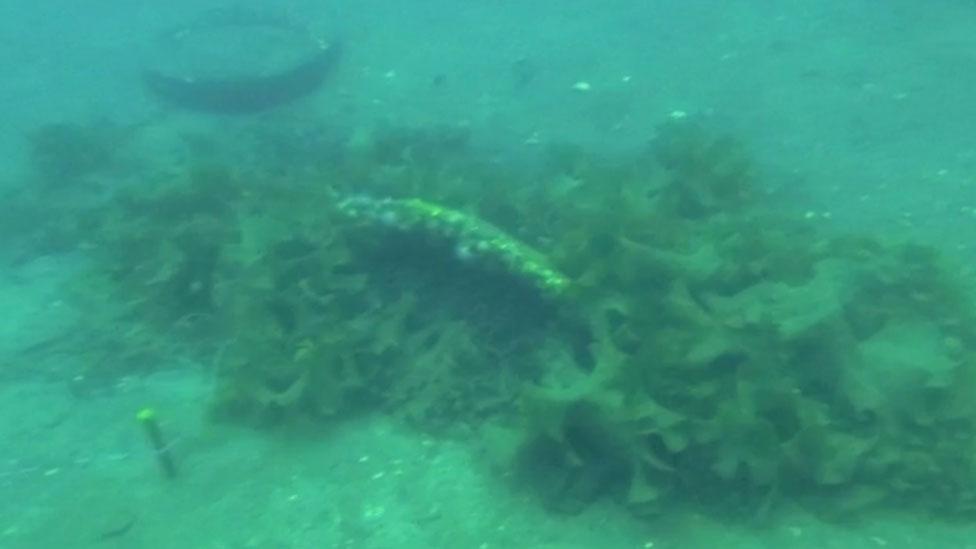Bid to raise last relic of Strontian's floating kirk
- Published
The floating church was built after the landowner refused permission for it to be built on land
A community on the west coast of Scotland has launched a crowdfunding appeal to raise the last relic of a unique church.
The floating church, external once rode the waves of Loch Sunart, which divides Ardnamurchan from Morvern.
It was the result of a split in the Church of Scotland known as the Disruption of 1843.
Hundreds of ministers and thousands of churchgoers - about a third of the Church of Scotland - broke away in protest at the right of landowners to appoint ministers.
Around 700 new churches were built across Scotland. But not at Strontian.
The landowner there refused the new congregation a plot on which to build.
So the congregation built one of their own on the only other place available to them.
Or rather, they had it built. Clyde built.

The anchor and its chain were found last year
A shipyard in Port Glasgow was commissioned to build a church that would float on the loch.
Once anchored in Loch Sunart, the congregation would row out to it. Contemporary accounts say it had seating for 750 people.
It was used for worship for years before the church was blown ashore in a storm - churchwrecked - and eventually broken up for scrap.
But something remained.

The anchor is buried in the bed of Loch Sunart
Last year, a local diver found one of the floating church's anchors - and some pieces of chain - half buried in the bed of the loch.
The anchor is huge and mushroom shaped, the only physical proof of a local legend.

Once raised, the anchor is to be displayed in a museum
A public meeting overwhelmingly agreed the community should try to raise the money to raise the anchor.
That part is expected to be relatively straightforward. The expensive bit will be conserving the anchor and chain so they don't turn to dust.
That's why a crowdfunding campaign has been launched.
Once raised and preserved, the artefacts could be the centrepiece for a proposed local heritage centre at Strontian.
The village is probably best known for giving its name to Strontium, external, the element discovered in nearby lead mines.
The "Raise the Anchor" campaign aims to raise awareness of its other claim to fame.